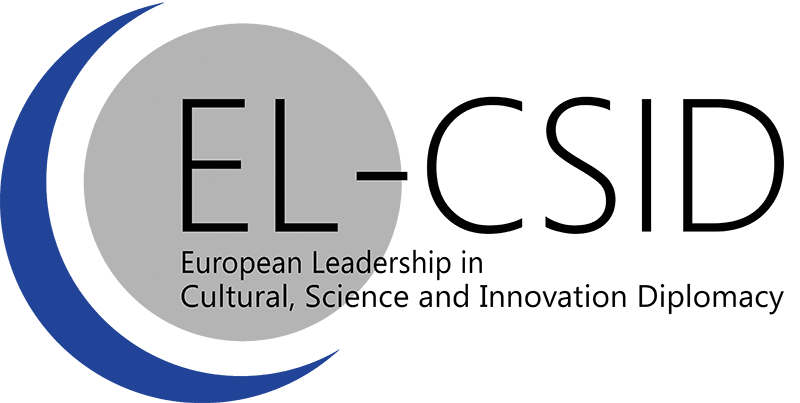Populism, nationalism, creationism: Challenges for innovation diplomacy in today’s political and soc
- Jos Leijten (Joint Institute for Innovation Policy
- 2 feb 2018
- 4 minuten om te lezen
This blog commentary was first published on: SpringerOpen Blog.
As globalization continues to be viewed more critically, especially by those who feel ‘left out’ from its benefits, the future of innovation diplomacy and international science collaborations seems increasingly unclear. Yet science cannot truly thrive without collaboration and is desperately needed to battle countless problems of the modern world, such as climate change and global health. In a new article published in European Journal of Futures Research, Jos Leijten discusses the challenges and different (and sometimes conflicting) influences that may shape science diplomacy in the future.

In the post Second World War period, economics, science and innovation were characterised by increasing globalization and openness. The World Trade Organization has successfully pushed free trade and the removal of barriers for access to markets around the globe. International science, technology and innovation organizations have worked hard towards joint agendas.
Countries that are known for barriers to market access, like China, Brazil and Iran, have become sensitive to pressures to open-up. And even the poorest of countries in Africa seem to benefit, with growing economies, wellbeing and wealth. We were just getting used to increased free trade, global collaboration, openness and shared ambitions.
A changed outlook for diplomatic services concerned with innovation
And then the tide turned. For many people in Europe and the USA, but also in Asia, globalization has been stretched too far and an increasing number of them feel “left out” of the advantages it brings. Unemployment, poverty and insecurity are blamed on “the foreigners”. With growing populist politics, national (and regional) self-interest is growing and with it are competition and powerplay between nations.
The number of people involved in those diplomatic services has been rapidly growing in the globalization era.
It changes the outlook of the diplomatic services which are concerned with scientific, technological and innovation collaboration. The number of people involved in those diplomatic services has been rapidly growing in the globalization era. What started in the second half of the 20th century as small networks of individual science attachés in embassies in a few priority counties have now become widely diverse and extensive networks of innovation attaché offices. They provide the intelligence that is necessary to underpin policy driven collaboration actions in the fields of science, technology and innovation. Basically, all major countries have such networks.
‘Own’ innovation first
There are several forces at work which may influence the future of innovation diplomacy. One of them is a stronger inclination to put “own innovations” and the expected economic returns on top, either by trying to benefit from scientific and technological developments elsewhere in the world or to seek wider use (markets) for indigenous innovations. Of course, this has always been an important driver for international collaboration, but recently it seems to become subject to defensive or protective policies like raising import tariffs on certain products, limiting scientific or technological collaboration, or preventing the take-over of certain companies by foreign investors.
All in all, we may expect a growing pressure on diplomatic services to become more defensive and to try to identify potential risks, especially in technological fields and sectors which are seen as critical to the national economy.
Global problems and challenges will not disappear when self-interest becomes a dominant political driver.
Free-riders not accepted
A second force, however, will push for a continuation or even reinforcement of the “traditional” orientation toward collaboration and openness. Global problems and challenges will not disappear when self-interest becomes a dominant political driver. Climate change, pollution of the oceans, epidemic health risks and other problems will continue to call for joint actions. In these fields, innovation is an undisputable global public good. But especially in a more competitive environment, free riders will hardly be accepted.
Therefore the pressure to engage in collaborative efforts will most likely increase. The work from global governance institutions (UN, WTO, etc.) will become an even greater challenge than it already is. In a fragmented world, multilateral solutions might prevail. The diplomatic work to build such efforts, however, is likely to become more sensitive to the wider foreign policy environment (e.g. geopolitical powerplay).
The power of global companies, cities, and regions
The most technologically and economically powerful regions may become strong non-state actors.
And there is a third set of forces shaping the future of innovation diplomacy, which is relatively independent from official foreign politics. We must consider, for example, the impact of the power and actions of truly global companies, which can move their assets around and are hardly dependent on a single nation’s policies.
In the “winner-takes-all” environment of the networked economy, such companies tend to become powerful political actors. Or think of the growing international activities of cities and regions trying to connect their local innovation ecosystems to complementary ecosystems in other places. Also, the most technologically and economically powerful regions may become strong non-state actors. And finally, let us not forget the potential power and influence of bottom-up driven networked innovations of which so-called sharing economy initiatives and blockchain are prime examples. All these forces add to the complexity of the environment in which innovation diplomats work.
These forces and their interactions must be considered when shaping foreign policies in relation to technology and innovation. The EL-CSID project will develop the characteristics and the consequences of these forces further in a scenario-style exercise.
This blog commentary was first published on: SpringerOpen Blog.
























